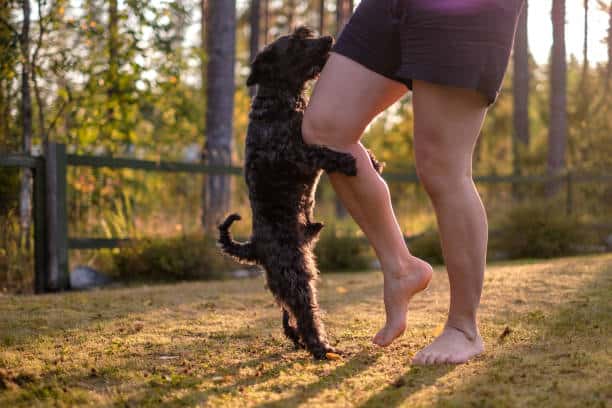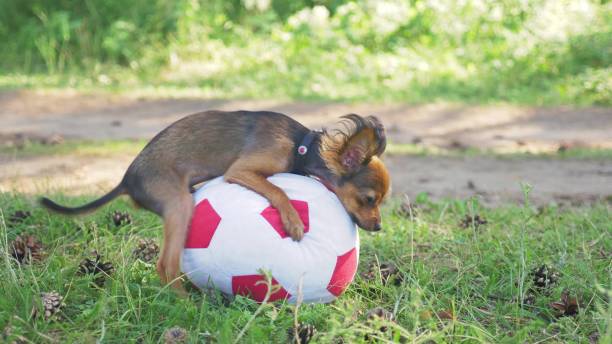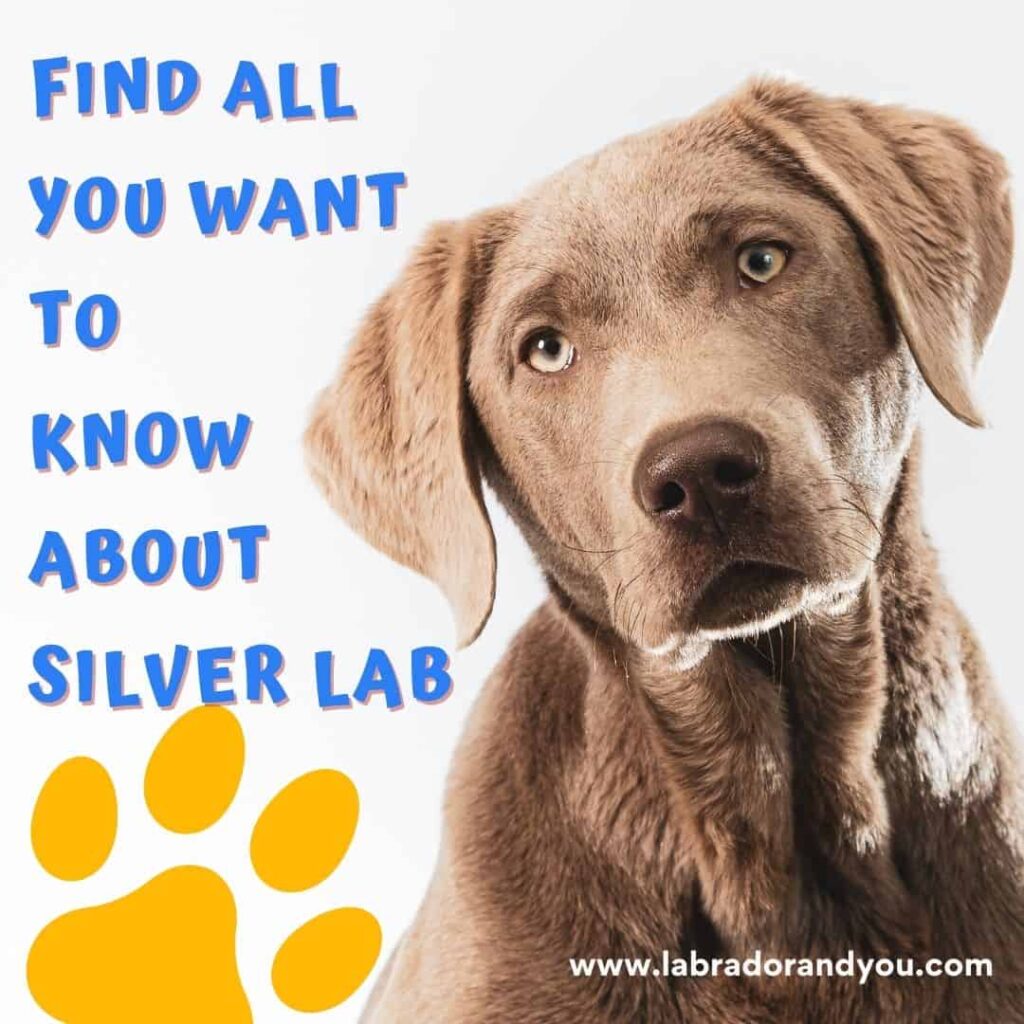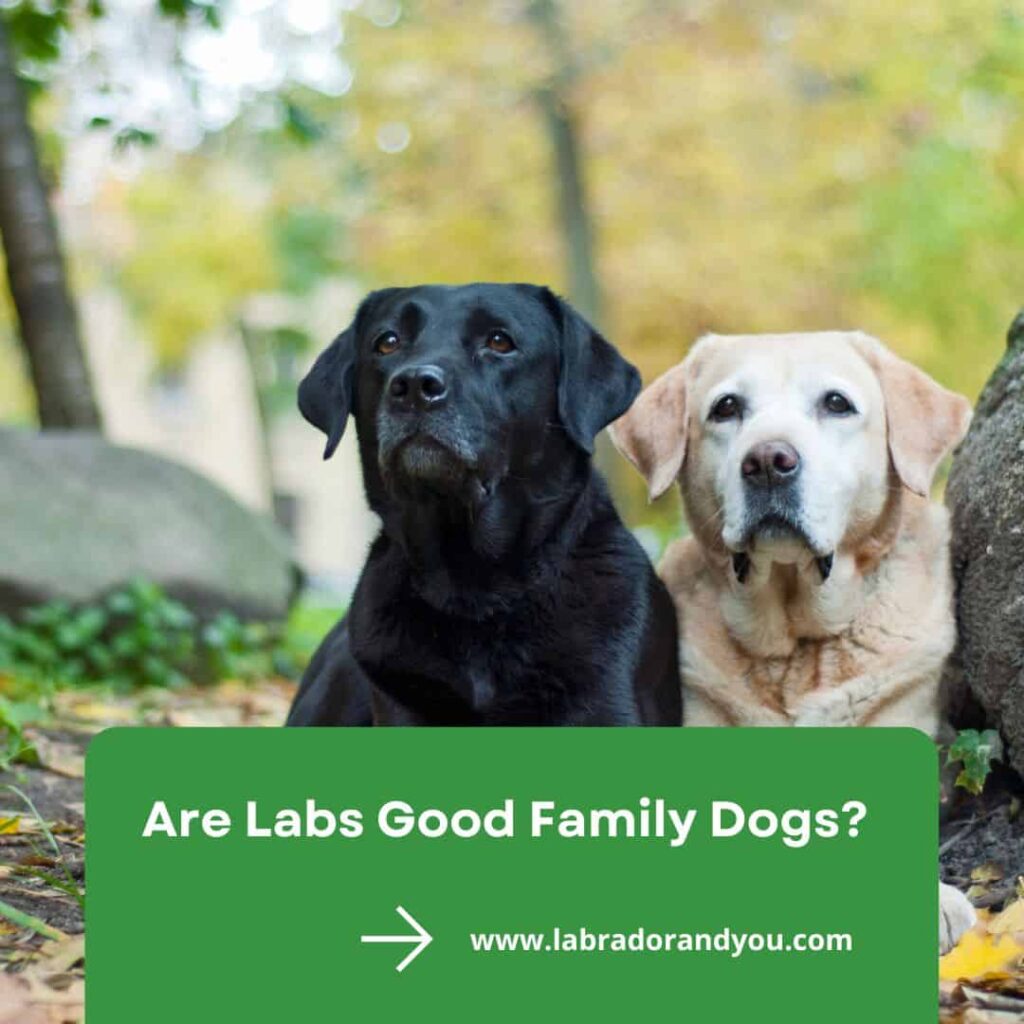Dogs hump the air when they are overly excited or aroused. Though it may seem strange, air humping is normal dog behavior. The motion mimics mating but can occur when a dog is happy, nervous, or trying to assert dominance.
Air humping does not always indicate sexual interest and is not a cause for concern unless it becomes excessive or problematic.

Mounting Behavior In Dogs
In this section, we delve into the concept of mounting behavior in dogs, exploring why they hump and discussing the various reasons behind this intriguing canine habit.
Why do dogs hump?
Dogs hump for many reasons. Some dogs do it when they feel happy or excited. Other times, dogs may hump out of stress or worry. It can be a way to say, “I am the boss.” This is known as dominance display in canine communication.
Sometimes, dogs even hump if they are not well-socialized with other dogs. They might also do it because of sexual behavior. In a few cases, health issues lead to this habit too. So each time you see your pup doing this act, know that there’s always a motive behind it.
The different reasons for humping
Dogs hump for lots of reasons. Here’s what we know:
- The most common reason is sexual behavior. Male and female dogs both can do this.
- Some dogs show their excitement by humping. Parties where many people are around or new toys can cause too much joy for them.
- A dog might try to show who’s boss by humping other dogs or even people.
- Dogs that don’t get to go out much or meet other dogs may hump things.
- If a dog feels stress, it might start to hump as a way to feel better.
- Health issues like urinary tract infections can also make dogs hump more.
Sexual Arousal and Humping
In this section, we’ll delve into the intimate aspects of canine behavior, exploring the link between sexual arousal and humping in dogs. We’ll demystify how to identify such conduct in your furry friend and address solutions for managing sexual frustration, particularly in intact male dogs.
This will provide you with comprehensive knowledge about the core components driving your dog’s mounting activities.
The connection between humping and sexual arousal
Dogs often hump the air due to sexual arousal or tension. It is a common form of sexual behavior in dogs. Both male and female dogs display this behavior when they feel sexually excited.
Some dogs may even hump objects or other dogs to burn off energy or seek pleasure, regardless of their sex. Sometimes, if a dog cannot reach what it wants to mount, it might start humping the air instead.
This action shows that your dog is trying to cope with deep emotions and feelings they can’t control easily.
How to recognize this behavior in your dog
Your dog may show certain signs when it’s feeling sexual arousal. They might start to hump the air often. Dogs usually do this when they have a lot of extra energy or feel strong feelings like stress or fear.
It will be more common in dogs that are not fixed because their hormone levels are higher. This behavior is also noticeable in both male and female dogs as it can happen due to nonsexual excitement too.
Addressing sexual frustration in intact male dogs
Sexual frustration can make male dogs hump things. This is seen more in male dogs that have not been neutered. This action could be their way of letting out feelings tied to sex urges.
Do note, even after neutering, a male dog can still feel these urges and act on them via humping. If the dog’s moves look like he is mating, this could mean sexual excitement or stress relief for him.
It may seem weird but think of it as a sort of self-pleasure activity for your dog! Unwanted humping can get better if we handle the root cause – sexual frustration in these dogs. A less frustrated dog will be happier and well-behaved too.
Excitement And Humping
In dogs, humping can be a manifestation of excitement or excess energy; understanding this behavior is crucial to developing effective training strategies to mitigate it.

How excitement can lead to humping behavior?
Dogs feel joy too. They may get so pumped up that they hump the air. It might look odd, but it’s not sexual most times. It is just a means to let go of their thrill and zeal. Sometimes, this animation can lead them to hump other dogs or even objects close by.
This behavior might start fights if it’s not fixed soon enough. Training your dog when it gets too stirred up can help put an end to this habit over time.
Training tips to reduce excitement and humping
Dogs often hump due to high levels of excitement. Here are some tips to help reduce this behavior:
- Use a calm voice: Your dog follows your lead. Stay calm and your pet will, too.
- Give rewards right away: As soon as your dog stops humping, give a treat or toy. This makes them link good behavior with rewards.
- Train in short steps: Start training for a few minutes each day and increase over time.
- Use separate areas for training: This lowers stress and can help stop humping.
- Brighten up their routine: Mix up the daily routine with new toys or different walking paths to lower excitement levels.
- Try dog training lessons: A trainer can help you find the best ways to deal with humping.
- Keep them active: Regular exercise can steer their energy in good ways instead of showing it through humping.
- Set boundaries: If your dog starts humping, move them gently away from the spot or person.
Dominance and Humping
In some dogs, humping can be a sign of trying to assert dominance over other animals or even humans. Recognizing this behavior is crucial in maintaining your authority and preventing potential behavioral issues.
As part of the hierarchy within the canine world, it’s important to establish yourself as the ‘pack leader’. There are various methods to exhibit dominance without employing harsh discipline or physical punishment.
However, if left unchecked, this dominant behavior could escalate, leading to more serious problems such as aggression. Therefore taking timely steps is key in ensuring harmonious relationships both within and outside your dog’s immediate environment.
How humping can be a sign of dominance in dogs?
Dogs often hump as a sign of dominance. This is a common behavior that many dogs show when they want to be the boss. The dog might try to hump other dogs, people, or even toys. But this doesn’t mean the dog doing the humping is always the top dog.
Sometimes it’s just their way of trying to fit in with their social group. Humping can also show who’s first in line for food and toys. It can help set up who has control over what things.
So if your dog starts humping a lot, it might be trying to tell you something about its place in the pack!
Ways to establish and maintain your dominance
Dogs express power using humping. Here’s how you can show your dog that you are the leader:
- Use Assertiveness: Show your dog who is boss in simple ways. This could be going out a doorway before them.
- Alpha Behavior: Don’t let your dog control your actions. If they want to play, choose when and where.
- Dominance Hierarchy: Make sure to feed the humans of the house before the dogs. This will show your place in the order.
- Power Play: Playing games with rules like ‘fetch’ can help you keep control.
- Social Dominance: Teach your dog to wait for things they want, like treats or walks.
- Display of Strength: Dog training involves discipline and control, which shows strength.
- Control and Authority: Set boundaries for where they can go in the house.
- Leadership Behavior: Show leadership by guiding your dogs on walks, not letting them lead you.
- Establishing Boundaries: Do not allow behaviors such as jumping on furniture unless given permission.
- Dominant Posturing: Stand tall and confident around your dogs to exhibit dominance.
Poor Socialization and Humping
In this section, we will delve into how inadequate socialization can lead to an escalation of humping behavior in dogs. We’ll examine why a poorly socialized dog might resort to humping as a coping mechanism and provide guidance on how you can help your pet develop healthier social habits.
It’s important to understand that proper interaction with other animals and people plays a key role in curtailing unwanted behaviors like excessive air humping. This part is designed to equip you with strategies for improving your dog’s social skills, thereby reducing their reliance on mounting as a form of expression or communication.
How lack of socialization can contribute to humping behavior?
Dogs need to meet and play with other dogs. This is called socialization. Dogs that do not see or spend time with their kind often may start to hump the air. They may also feel high excitement from being alone too much.
Some dogs hump because they are stressed or scared, which can come from a lack of socializing. Ways of helping your dog include taking them to dog parks for play dates, or using positive training methods at home.
If it goes on a lot, you might consider going to dog socialization classes.
How to address this issue in your dog?
Helping a dog with humping issues needs time and patience. Here are steps you need to take:
- Look at your pup’s life. Find out if stress is causing them to hump more.
- Make sure they’re not home alone too much. This can cause stress in dogs and lead to more humping.
- Check if your pet has enough friends. Lack of socialization in dogs can lead to humping.
- Teach your dog new tricks or play games with them more often. This helps keep their mind busy so they don’t feel like humping.
- Show your dog love but set clear rules too. This helps stop any dominance the dog might feel, which can cause humping.
- Try positive reinforcement training methods for better behavior.
- If nothing works, take your dog to a vet for a health check – up.
- If needed, have a trainer look at your dog’s case.
Displacement Behavior and Humping
Displacement behavior in dogs refers to an action carried out that seems irrelevant to the situation, such as humping the air. This often occurs when a dog is experiencing conflicting emotions or stress.
By understanding this concept, we can understand why our pets may behave strangely at times. Pet owners need to recognize and address displacement behavior early on, ensuring their dogs’ mental well-being stays intact.
Understanding displacement behavior
Displacement behavior in dogs links to strong feelings. Dogs feel stress, excitement, and not knowing what will happen next. They do things that look strange when they have these feelings.
For example, a dog might hump the air because it is upset or excited. It helps them eliminate extra energy or deal with tough emotions like fear or worry. This behavior is not always about having relations with another dog.
Sometimes dogs hump out of place, when it does not seem to make sense in the situation. Air humping can show that your dog does displacement actions—it’s their way of dealing with hard times.
How it relates to humping in dogs?
Dogs may hump as a response to mixed feelings or stress. This is known as displacement behavior. Think of it like this: your dog sees a cat but doesn’t know if he should chase it or not.
So, he starts to hump the air instead.
Displacement humping can also come from other unsure moments. For example, when your dog meets a new person or dog, he may feel both happy and worried at the same time. He does not know what to do with these different emotions.
As a result, he might start humping the air or even his toy! It is one way for him to let out his anxiety and confusion.

Medical Issues and Humping
Certain medical conditions in dogs, such as urinary tract infections or skin allergies, can lead to humping behavior. As a responsible pet owner, it is important to monitor your dog’s health and consult with a veterinarian if you notice persistent air humping.
Implementing appropriate treatment plans for any underlying health issues can help deter this behavior and ensure your dog’s overall well-being.
How certain medical conditions can cause humping?
Dogs may hump due to some health problems. Urinary tract infections and bladder issues can lead to this behavior. Dogs also react this way when allergies or local irritations affect their genital area.
Infections in the genitals or urinary system may cause dogs to hump more too. Always check your dog’s health if they start to hump a lot. A vet visit can rule out these possible medical conditions that might be causing the problem.
Ensuring your dog’s health and addressing any underlying issues
Taking care of your dog’s health is key. Sometimes, humping the air can be due to medical conditions. Urinary tract infections and bladder issues may cause this behavior. Dogs with itchy skin or allergies might also act out in this way.
If you see your dog hump the air often, take him to a vet for a check-up. The vet can check if your pet has any health problems causing this behavior. Neutering male dogs can help as it reduces hormone-related humping actions.
How To Discourage Your Dog from Humping?
This section will explore different strategies to discourage your dog from humping, including positive reinforcement training methods, setting boundaries and redirecting their behavior.
We’ll cover the importance of remaining patient during this process and offer ideas on how you can effectively guide your pet towards better habits.
Positive reinforcement training methods
Use positive training methods to stop your dog from humping.
- Give treats when your dog stops humping. This helps the dog learn that stopping gets a reward.
- Use toys or play to distract your dog. Turn hump time into playtime or chew toy time.
- Keep calm and say “no” in a firm voice if your dog starts to hump. Don’t yell or panic, people’s loud voices can excite dogs more.
- Offer lots of praise and petting when your dog chooses not to hump.
- Try force-free training methods like turning away or ignoring the dog until they stop humping.
- Reward-based training can be really helpful too, use it to show what behavior you want from your dog instead of unwanted behavior.
- Behavior conditioning can help change how dogs see things, making them choose better behaviors.
Setting boundaries and redirecting behavior
Controlling your dog’s humping habit requires clear rules and guiding their actions towards better habits.
- Start with setting limits for your dog. Define which actions are okay and which ones are not.
- Use positive reinforcement training. This type of training uses rewards to motivate good behavior.
- Try redirection tactics when your dog starts humping. Get them involved in a game or give them a toy to play with.
- Boundaries for dogs are important too. Make sure there are areas in your home where humping is not allowed.
- Teach the correct actions to your dog using dog obedience training methods. This involves making commands that can stop the wrong behavior at once.
- Always watch out for cues of humping behavior in your dog so you can control it early.
- Controlling humping behavior also means managing other aspects of a dog’s everyday life, like diet and exercise.
- Find ways to use up your dog’s extra energy doing things they love, like playing fetch or going on walks.
- Be patient as you guide their actions away from humping and towards more suitable behaviors.
- If all else fails, consider seeking help from a professional who specializes in behavior modification for dogs.

Conclusion
Stop! Do not laugh when your dog humps the air. It is not a dirty joke. They do it for lots of reasons like play, stress or health issues. Train them and give them toys to help stop this act.
Keep an eye on them and if things get worse, see the vet quick.
FAQs
1. What Is Air Humping?
Air humping is when a dog thrusts their pelvis against the open air, often in a rhythmic motion. They are not making contact with a person, object or other animal.
2. Is Air Humping Normal For Dogs?
Yes, air humping is a common and normal behavior for dogs. Both male and female dogs may hump the air when they get excited or aroused.
3. Why Do Dogs Hump The Air?
Dogs hump the air for a few different reasons. They may do it when greeting someone to show excitement, when nervous or anxious, when trying to self-soothe, or to display dominance. It does not always indicate sexual interest.
4. Should I Be Concerned About Air Humping?
Most of the time, occasional air humping is nothing to worry about. However, if it becomes excessive and happens every time your dog gets excited, it could signal anxiety, stress or a compulsive disorder.
5. How Can I Curb Frequent Air Humping?
If it happens a lot, try distracting your dog when they start with a toy or command. Make sure they get plenty of exercise and affection. Consult your vet if the issue persists.
6. Is Air Humping Ever Sexual Behavior?
It can be in some cases, such as if one dog starts air-humping in response to seeing another dog they are attracted to. But many times it is simply excitement-based.
7. Do Female Dogs Hump The Air Too?
Yes, it is common for female dogs to hump the air. Spaying generally does not affect or decrease this behavior in females.
8. At What Age Do Dogs Start Humping The Air?
Puppies may start air humping as young as several weeks old. The behavior peaks at sexual maturity but dogs of any age may do it.
9. Should I Interrupt Or Punish Air Humping?
You should not punish your dog for this normal behavior. Just gently distract them or have them do a different behavior that is incompatible with humping.
10. Is Air Humping Linked To Dominance?
It can be in some cases, such as if one dog starts air humping in response to another dog entering their space. But often it is simply excitement.
Author Profile
- Site Owner And Dog Lover
-
Aritra, the founder of Labradorandyou.com, is a lifelong dog lover whose passion ignited for Labradors for their loyalty and intelligence. With extensive research and personal experiences, Aritra has become a Labrador expert, offering a rich resource on the breed. Labradorandyou.com provides reliable, timely, and evidence-based information, including Labrador-specific product reviews, training techniques, and care tips.
Labradorandyou.com was born out of Aritra's passion and his desire to share his profound knowledge about the breed. The site serves as a comprehensive resource, offering a wealth of up-to-date information for Labrador owners and enthusiasts alike
Also by the author
-
 Lab-TypesNovember 17, 2023Old Dog Seizures: Causes, Symptoms, and Treatment Options
Lab-TypesNovember 17, 2023Old Dog Seizures: Causes, Symptoms, and Treatment Options
-
 Lab-TypesNovember 17, 2023Why Is My Dogs Poop Yellow? 8 Reasons & Solutions
Lab-TypesNovember 17, 2023Why Is My Dogs Poop Yellow? 8 Reasons & Solutions
-
 ReviewsNovember 17, 2023The Only Hill’s Science Diet Review You Need To Read
ReviewsNovember 17, 2023The Only Hill’s Science Diet Review You Need To Read
-
 Lab-TypesNovember 17, 2023How To Adopt An Emotional Support Dog?
Lab-TypesNovember 17, 2023How To Adopt An Emotional Support Dog?





